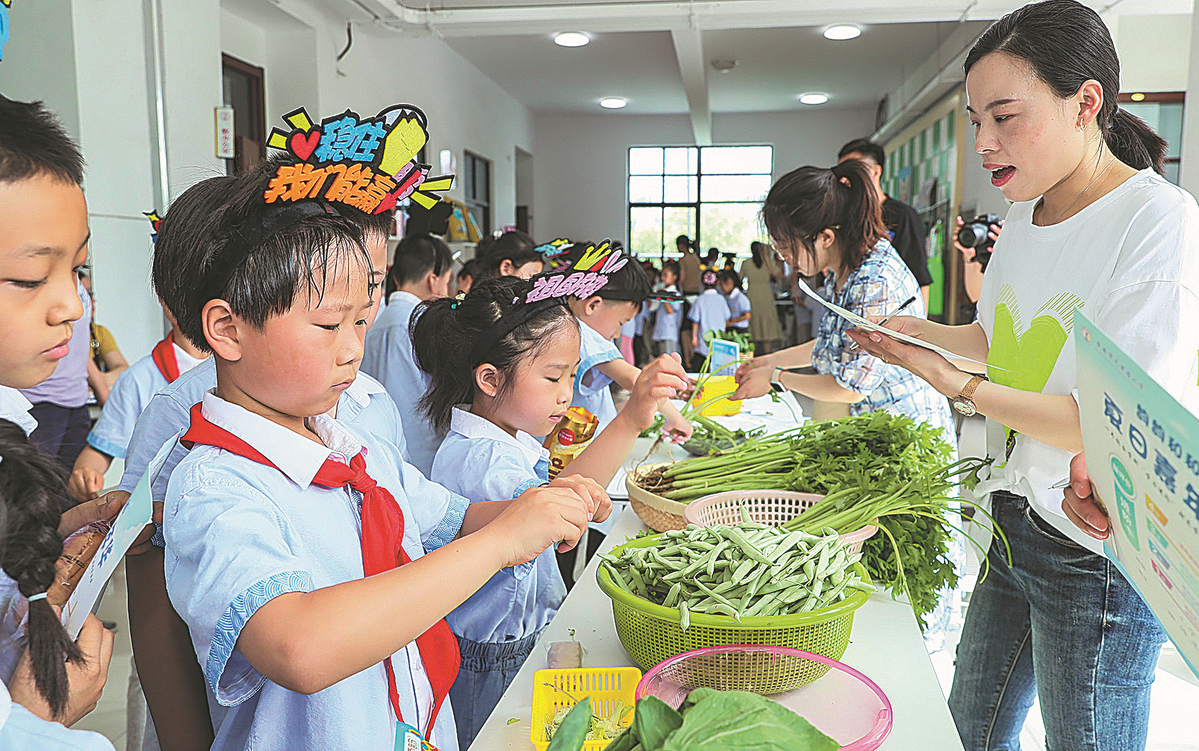Dropouts among poor fall to historic lows
By LUO WANGSHU | CHINA DAILY | Updated: 2022-06-22 07:42

China has made efforts to stop poor students from dropping out of elementary and middle schools in the past decade, leaving no child behind and enhancing education equality.
"From 2012 to last year, the number of dropouts in registered impoverished families has fallen to zero, making sure no one is left behind at any time. It has solved the historical dropout problem, especially in deeply impoverished areas," Lyu Yugang, director of the Ministry of Education's department of basic education, told a news conference on Tuesday in Beijing.
For instance, he said, in Sichuan province's Liangshan Yi autonomous prefecture, more than 60,000 dropouts have returned to school.
The ministry is taking a "dynamic zero" approach on the dropout issue in registered poor families, meaning to leave no one behind at any time.
At the nine-year compulsory education stage, China now has 207,000 schools, 158 million students and 10.58 million teachers, according to the ministry.
From 2012 to last year, China spent 10 years to achieve balanced development among different counties in education, and it is a new milestone of the development of China's compulsory education, he added.
Compulsory education has been prioritized in the social economic development plan, financial investment and public resources allocation. Leaders at various levels including provincial, city and county levels have taken up the duty to promote compulsory education and pay great attention to it, creating an atmosphere valuing compulsory education in all society, he said.
From 2012 to last year, the expenditure per student in elementary and middle school increased from 7,447 yuan to 14,458 yuan ($1,112 to $2,159) per elementary school student, and rose from 10,218 yuan to 20,717 yuan per middle school student.
Rural students have grown taller and healthier thanks to a nutrition improvement program. The 15-year-old males are an average of 10 centimeters taller and females of the same age added 8 cm on average in 2020 compared to average heights in 2012, he said.
To assess education quality and promote balanced development among different counties, the State Council's education inspection office has carried out reviews and inspections in counties across China.
As of the end of last year, all 2,895 counties across the country had passed education inspections, marking important progress in China's compulsory education, said Tian Zuyin, head of the ministry's office of national education inspection.
The inspection results showed that nearly 3,000 counties across the country have met national requirements in balanced development. In general, the gap between compulsory education schools in different counties and regions has been reduced greatly, Tian added.
It is a challenge to improve education quality in compulsory education as China, the world's largest developing country, has a huge number of students in compulsory education, said Yin Houqing, vice-president of the Chinese Society of Education, adding that it is a miracle for the country to achieve balanced development in counties in just 10 years.
























